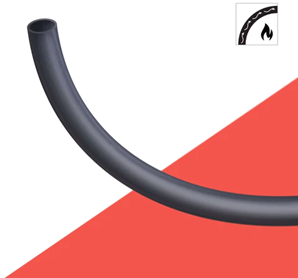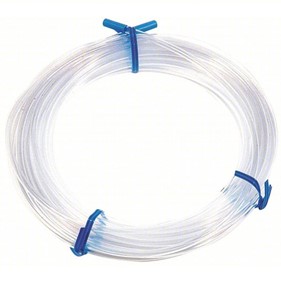Considered to be one of the most versatile engineering materials there is, fluoropolymer tubing is used in almost every field of modern technology and science today.
The revolutionary fluoropolymer material is best known for its excellent heat resistance. It also happens to do well in extremely cold temperatures, retaining its flexibility to -100°F. Lastly, fluoropolymer tubing has remarkable resistance to chemicals and solvents. One of its biggest advantages is its ability to protect materials from corrosion because it can handle almost all corrosive chemicals in use today.
Below, polymer experts discuss the outstanding heat resistance of fluoropolymer tubing, and its suitability for applications related to the aerospace, electronics, and automotive industries.
Heat-Resistant Fluoropolymer Tubing
Fluoropolymer tubing has a powerful resistance to heat - it has the ability to withstand up to 500°F continuously, made possible by its unique properties as a type of polymer that contains fluorine atoms.
The fluoropolymer’s heat-resistance properties can be attributed to its various characteristics, including:
High Melting Point
Fluoropolymers have remarkably high melting points. Polytetrafluoroethylene (PTFE), a type of fluoropolymer tubing, has a melting point of 327°F, which is far beyond the typical operating temperatures used in most industrial applications.
Low Thermal Expansion
These tubes have a low coefficient of thermal expansion, which means the material expands very minimally when exposed to heat. This makes them ideal for applications where dimensional stability is crucial, even at high heat.
Thermal Stability
Fluoropolymers have the ability to retain their chemical and physical properties even at high temperatures, making them thermally stable. This allows them to withstand the impacts of extreme heat over long periods of time.
Non-Stick Properties
PTFE and other fluoropolymer tubes have non-stick properties, meaning they do not easily adhere to surfaces or other materials, even when exposed to elevated temperatures.
Chemical Inertness
As mentioned, fluoropolymer tubing is highly resistant to chemicals and does not react easily with other substances even when subjected to heat. This allows for extreme heat endurance without degradation.
Common Fluoropolymer Tubing Heat Applications
Market analysts from Research and Markets have reported that the fluoropolymer tubing industry has a remarkable 5.2% compounded annual growth rate and is expected to reach $662 million by 2026.
Because of their ability to withstand high heat, fluoropolymer tubes are suitable for applications that involve extreme temperatures in various industries, including:
- Aerospace: Because of their remarkable heat resistance, fluoropolymers are useful in the aerospace sector for applications including conveying hydraulic fluids and fuels where exposure to extreme heat is a normal part of operations.
- Electronics: Fluoropolymer tubes also have plenty of applications in the electronics industry because of their heat resistance. They are primarily used to insulate and protect cables and wires inside electronics or near heat-emitting components.
- Automotive: Because of the rising demand and production of electric vehicles, there is an increasing demand for fluoropolymer tubing as well, since it is crucial in the safeguarding of high-temperature electrical components to ensure the vehicle’s safety and efficiency.
Wrapping Up
The remarkable heat-resistant properties of fluoropolymer tubes make them an essential component in countless applications across different industries. With its outstanding features and versatility, fluoropolymers are indeed a revolutionary material.




